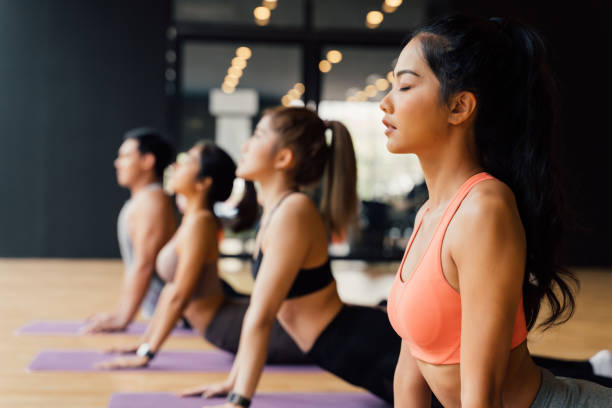Who doesn’t desire a toned body or a sculpted buttocks? Regular yoga practice can certainly deliver these results, but is the outer appearance an accurate reflection of internal health?
While yoga undeniably offers a myriad of benefits, it is crucial to recognize that just like indulging in chocolate alone won’t provide a complete diet, relying solely on yoga for fitness may not be ideal either.
Sadly, many yoga instructors who exclusively practiced yoga are now grappling with yoga-related injuries. Prolonged overuse of specific poses has led to fractures, tears, and joint injuries among these instructors.
Within my own circle, I’ve observed an increase in cases of arthritis and osteoporosis. What was once believed to be a panacea may only provide partial healing. To achieve optimal fitness and maintain a holistically healthy body, experts now advocate the incorporation of other training methods such as weightlifting, cardio exercises, and Pilates.
Combining different exercise modalities is a win-win situation. Just as yoga supports other forms of fitness, diverse training methods can enhance one’s yoga practice as well.
Here are four key considerations for creating a well-rounded workout regimen:
1. Include weight training into your routine to enhance strength and stability.
While a yoga class already encompasses stretching and strengthening, the type of strength developed through yoga differs from that gained through weightlifting. Yoga poses primarily build strength isometrically, involving holding static positions or utilizing one’s body weight against an immovable force, such as the floor or a wall. Consequently, yogis tend to develop longer, leaner muscle tone.
Increasing the weight load progressively also complements the isometric poses. For instance, practicing overhead presses with dumbbells can enhance stability during a handstand more effectively than solely practicing the handstand itself.
There exists a misconception that weight training leads to bulky muscles. However, studies indicate that weightlifting may actually improve bone density without causing significant muscle bulking. If you are concerned about bulking up, stick to lower weights with higher repetitions. This approach promotes overall strength both internally and externally.
2. Maintain cardio exercises for heart health.
A robust cardiovascular system is crucial for a healthy and prolonged life. However, the extent to which yoga qualifies as a cardiovascular workout remains a subject of debate.
While faster-paced yoga styles like Power Yoga and Vinyasa Flow can increase heart rate and enhance lung capacity, they do not compare to traditional cardio exercises like running in terms of intensity.
To reap aerobic benefits, yogis need to perform yoga at a significantly accelerated pace, which raises the risk of injury. This poses a greater danger for individuals with hypermobile bodies who tend to rely on joint movements rather than muscular engagement. Unlike muscle fibers that stretch and return to their original shape, ligaments and tendons once overstretched tend to remain in that state. Repetitive instability can lead to osteoarthritis and even dislocated joints such as the shoulder or hip.
Engaging in sustained cardiovascular exercises like cycling or jogging proves to be a more sustainable approach for elevating heart rate over a longer duration. Regular yoga practice can improve breathing techniques, complementing cardio workouts.
3. Integrate non-impact sports for lung and core development.
Yoga is not a one-size-fits-all exercise. As individuals age, their bodies change, necessitating modifications to their exercise routines. Experts encourage non-impact activities such as swimming alongside a yoga practice.
Pilates serves as an excellent non-impact complement to any workout regimen. The isolated movements in Pilates effectively challenge the core muscles, surpassing what yoga alone can accomplish.
In yoga, individuals often rely on lower back movements, which are highly mobile, rather than engaging their core muscles correctly. Understanding how to properly activate the core can significantly enhance one’s yoga practice, making poses more stable and powerful.
4. Embrace CrossFit or boot camp for comprehensive conditioning.
Repetitive activities, when performed mindlessly, can lead to overuse injuries. Therefore, varying your fitness routine not only benefits your body but also stimulates your brain.
CrossFit and similar boot camp-style workouts involve engaging in multiple exercises within a single session.
Even making simple adjustments, such as switching hands while performing an activity, can engage the brain in new ways. Since yoga embodies the ultimate form of mental conditioning, it can assist athletes in maintaining focus and attentiveness when undertaking other fitness styles.
Yoga teaches us the art of balance—both literally, as we stand on one foot, and metaphorically, as we strive to avoid excess in any single pursuit. By incorporating additional fitness modalities, you not only benefit your entire body but also enhance various aspects of your life.
Looking for workouts to supplement your yoga practice? Try these exercises that use only resistance bands:
